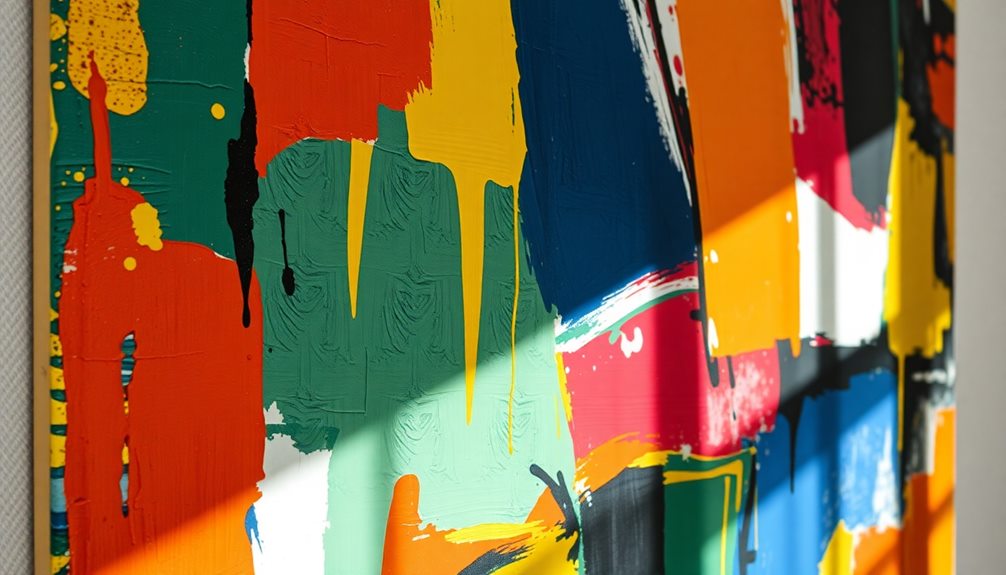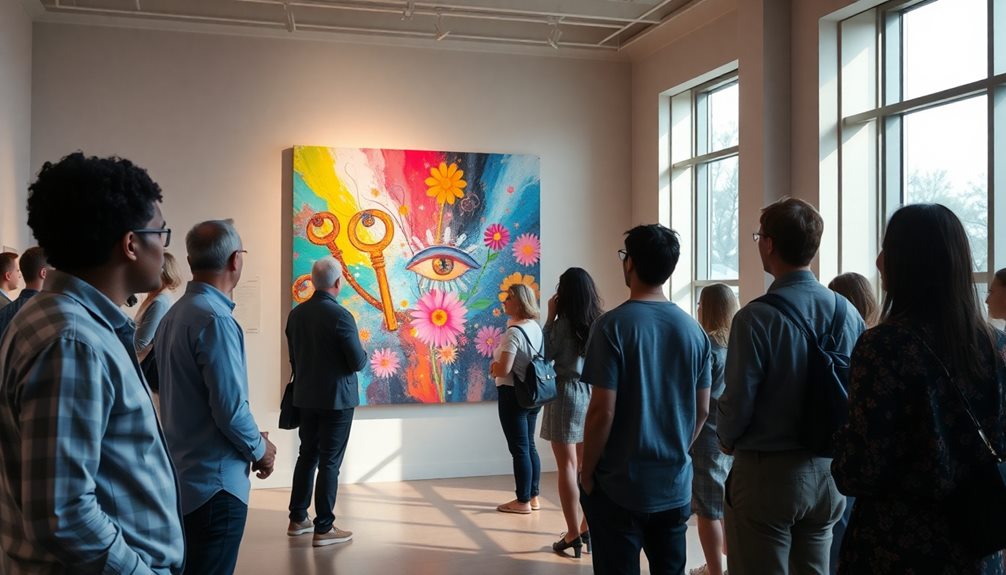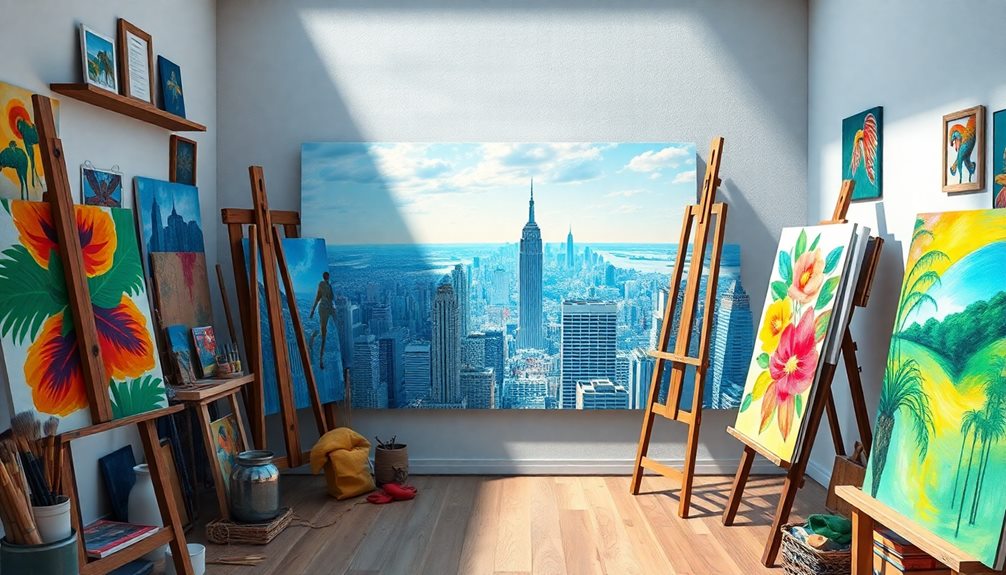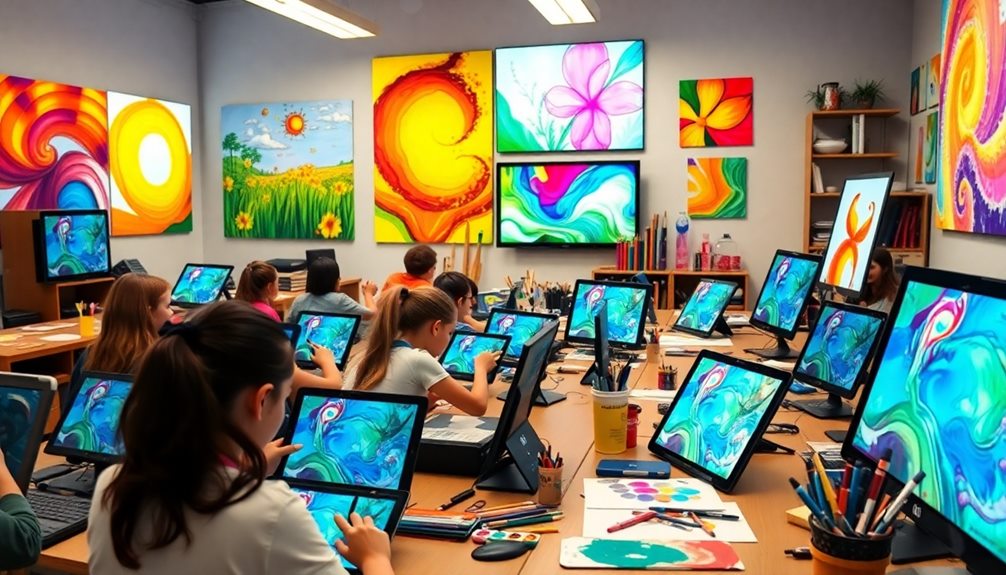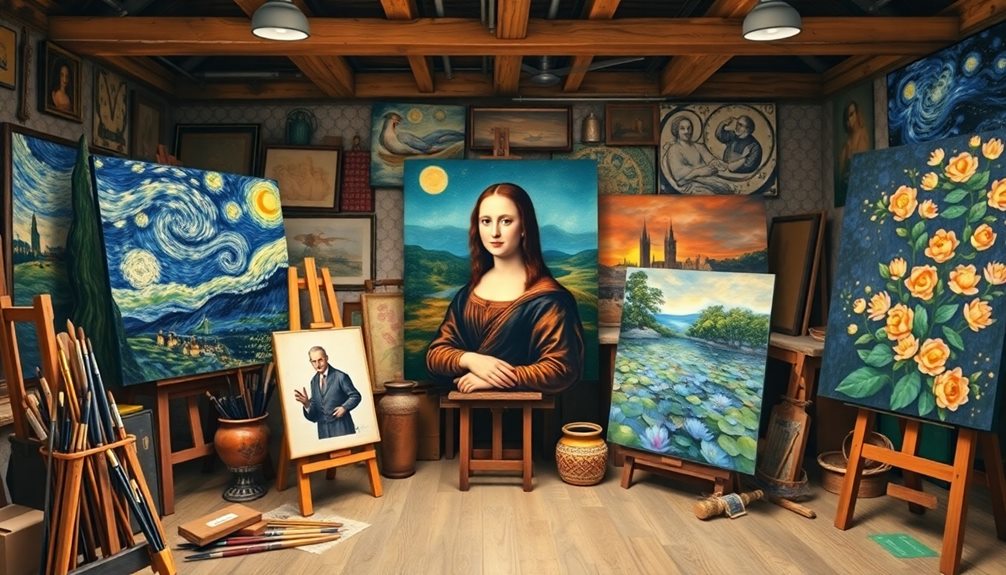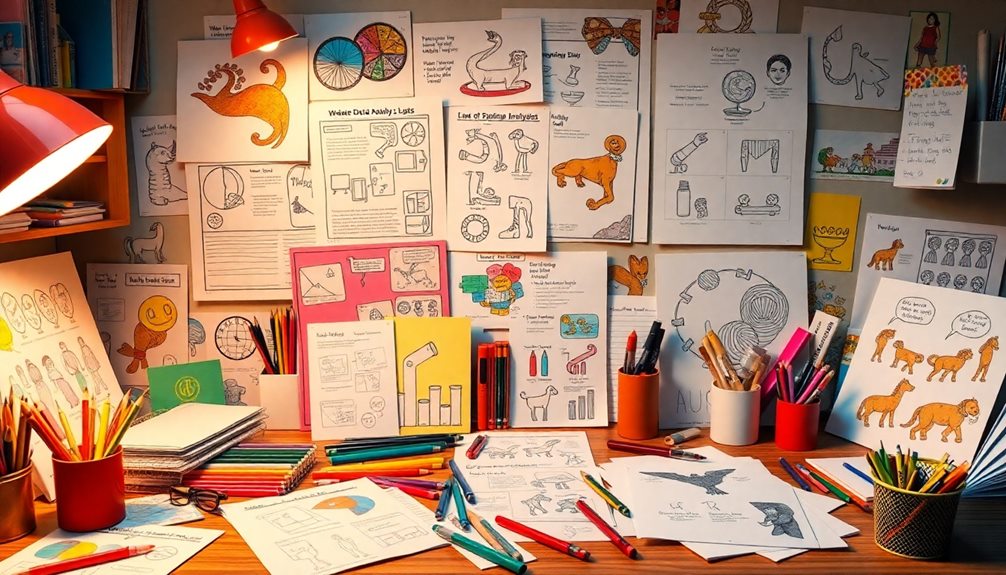Understanding composition in art means comprehending how visual elements are arranged to shape your experience. It's not just about placing objects; it's about guiding your eye and evoking emotion. Key techniques like the Rule of Thirds and triangular arrangements help create focus and balance within a piece. By grasping these principles, you can enhance your appreciation and connection to art. Remember, effective composition communicates the artist's message while drawing you into a visual narrative. If you're eager to refine your skills further, there's much more to explore regarding techniques and famous artworks that exemplify these concepts.
Key Takeaways
- Composition involves the intentional arrangement of visual elements, shaping viewer experience and emotional response in art.
- Key principles such as balance, emphasis, and unity help organize visual elements for effective communication.
- Techniques like the Rule of Thirds and Rule of Odds enhance focal point placement and visual appeal.
- Effective composition guides the viewer's gaze, creating a visual journey that resonates with the artist's intent.
- Mastering composition is essential for developing impactful artwork that engages and connects with audiences.
Introduction
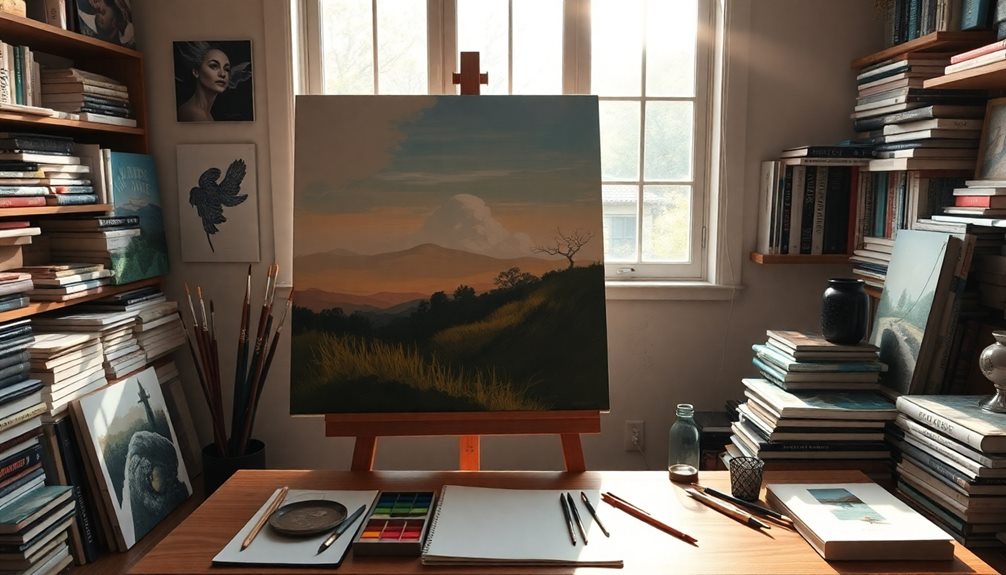
Composition in art is a vital aspect that shapes how a viewer experiences an artwork. It refers to the intentional arrangement of visual elements like line, shape, color, and texture. When you master composition, you create a cohesive and engaging piece that guides the viewer's eye and communicates your intended message effectively. This enhances the overall impact of the artwork.
Key principles of composition—balance, emphasis, rhythm, movement, and unity—play a crucial role in achieving harmony and aesthetic appeal. By applying these principles, you can direct attention to specific areas and evoke emotional responses from your audience. Techniques such as the Rule of Thirds and the Golden Ratio help in crafting visually pleasing arrangements and focal points, making your work more engaging.
When you focus on these elements and principles, you elevate your artistry, fostering a deeper connection with viewers. Your composition becomes a bridge that links your vision to their experience, enriching the way they perceive your art. This bridge is further strengthened by understanding cultural context in art, which allows your work to resonate on a more profound and personal level. By incorporating or acknowledging cultural influences, you create layers of meaning that invite viewers to explore not just the aesthetics but also the stories and histories behind the piece. This approach transforms your art into a dialogue, bridging gaps between diverse perspectives and sparking meaningful conversations.
Understanding the dynamics of composition not only enhances your work but also transforms how others engage with it, making this knowledge essential for any artist.
Key Concepts and Definitions
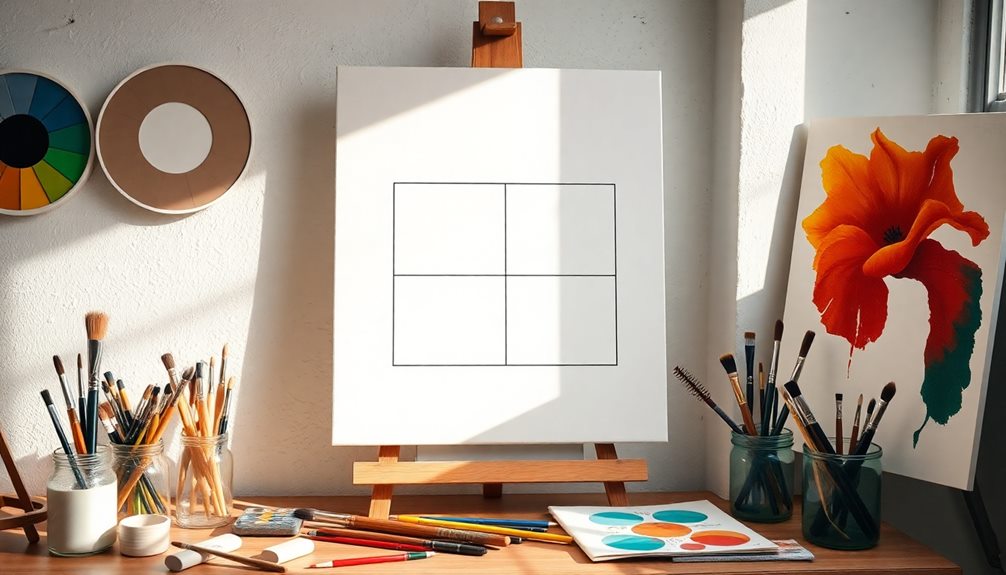
An understanding of key concepts and definitions in art composition is essential for creating impactful works. Composition refers to the intentional arrangement of visual elements of art, such as line, shape, color, texture, and space. When you grasp how these elements interact, you can create a cohesive and engaging artwork that resonates with viewers.
The key elements of composition—line, shape, color, tone, and texture—play critical roles in establishing depth, interest, and harmony. By manipulating these elements, you can guide the viewer's eye and create a narrative within your artwork.
The principles of composition, including balance, emphasis, rhythm, movement, and unity, help you organize these elements effectively. They evoke specific moods and enhance the viewer's experience. Techniques like the Rule of Thirds and the Rule of Odds are invaluable in placing focal points strategically, creating dynamic arrangements that captivate attention.
Ultimately, a well-composed artwork not only engages viewers but also clearly communicates your intended message and emotional connection. By mastering these key concepts and definitions, you'll set a strong foundation for your artistic journey.
Essential Composition Techniques
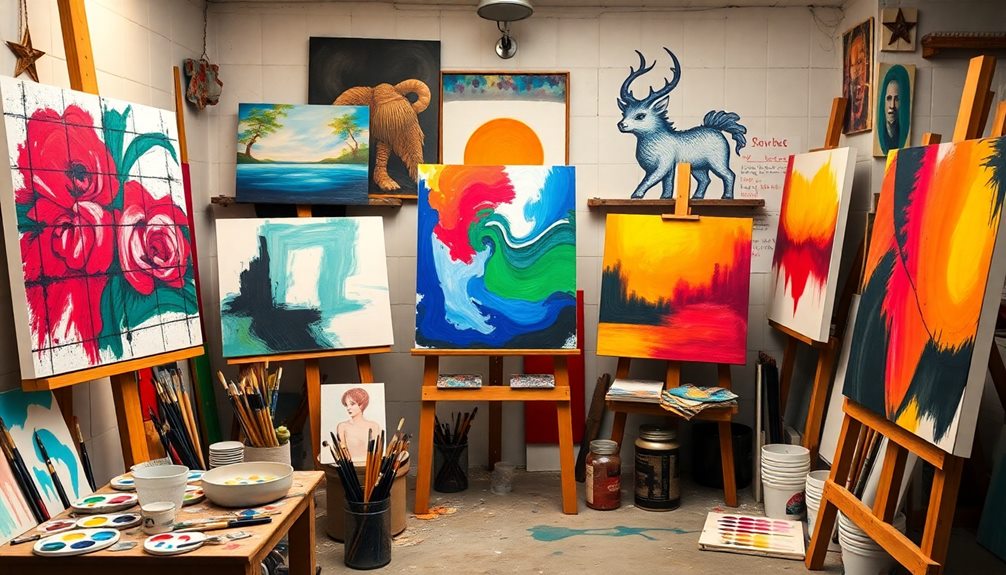
While exploring essential composition techniques can feel overwhelming, mastering a few key strategies can significantly enhance your artwork. First, remember that composition is essential; it determines how your viewer interacts with your piece. The rule of thirds is a powerful tool; by dividing your canvas into nine equal sections, you can position focal points along the lines or intersections, creating a dynamic feel that captures attention.
Another effective technique is simplification. By reducing visual noise—using a limited color palette and larger brushes—you draw focus to key elements. Additionally, consider the rule of odds; compositions with an odd number of elements are often more visually appealing, creating a natural sense of balance.
Triangular arrangements also work wonders in your art. They create stable structures that guide the viewer's eye and emphasize the relationships among subjects.
Lastly, utilize leading lines, whether actual or implied, to direct the viewer's gaze through your piece. This flow enhances the overall narrative and engages your audience. By incorporating these essential techniques, you'll elevate your compositions and create more impactful artwork.
Famous Artworks Analyzed
How do famous artworks demonstrate the principles of composition? Take Leonardo da Vinci's "Mona Lisa," for instance. It perfectly uses the Golden Ratio, creating a harmonious balance that guides your gaze through the elements of the painting. This technique exemplifies the foundational knowledge for artistic practice that enhances appreciation for various art forms and techniques.
You'll notice how this good composition in art draws your attention to the enigmatic smile, serving as a strong focal point.
Then there's Raphael's "Madonna in the Meadow," which employs a triangular composition. This method leads your eye to the central figures, providing stability and structure that enhances your understanding of the piece.
In contrast, Jackson Pollock's "Convergence" breaks traditional rules with its all-over composition technique. Here, the absence of a distinct focal point immerses you in the movement and texture of the artwork, prompting a unique engagement.
Patrick Hughes' "Palette" invites you to explore the relationships between color and form through its intricate arrangement, while Brian Korteling's "Glitch" showcases modern compositional strategies, emphasizing emotional impact through chaotic elements.
Each of these masterpieces highlights how diverse approaches to composition can affect your viewing experience and appreciation of art.
Tips and Best Practices
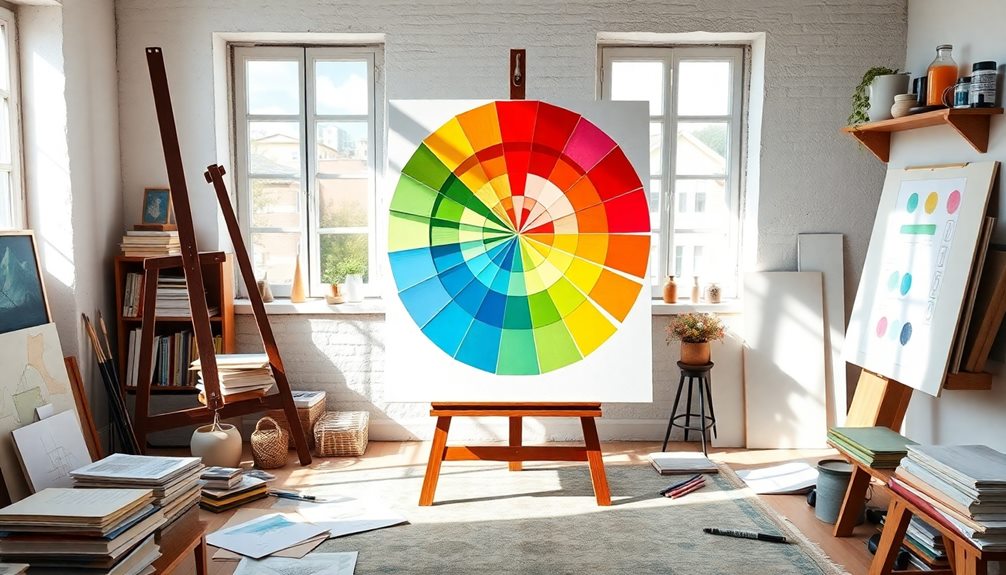
Mastering composition in art requires a blend of techniques that can elevate your work to new heights. Start by utilizing the Rule of Thirds; divide your canvas into a grid of nine equal sections and place your focal points at the intersection points. This method creates a more engaging composition.
Additionally, incorporate the Golden Ratio to achieve pleasing proportions and harmony, a principle embraced by artists like Da Vinci.
Experiment with the Rule of Odds; groupings of three or five objects tend to create a more dynamic and visually interesting composition than even numbers. Establish a strong focal point by using contrast, isolation, or strategic placement to guide the viewer's eye toward your main subject.
Also, pay attention to the balance between positive and negative space. Effectively managing these elements enhances your overall composition. Maintaining equal visual weight prevents clutter and promotes harmony within your piece.
Viewer Engagement Responses

Effective composition not only enhances the visual appeal of an artwork but also plays a pivotal role in engaging viewers on a deeper level. By guiding your eye through the piece, effective composition creates a visual journey that resonates with the artist's intent. Strong focal points capture your attention, fostering a significant emotional connection to the artwork. When you encounter a well-placed focal point, it invites you to explore the nuances of the piece.
Unity and balance within a composition contribute to a harmonious experience, making it easier for you to appreciate and understand the artwork. A balanced arrangement allows your eye to flow naturally, while contrast and emphasis highlight key elements that draw you in. As you engage with these focal points, your interest is maintained, encouraging a more profound exploration of the artwork.
Engaging compositions evoke emotional responses and provoke thought, inviting you to delve into the deeper meanings behind the visual elements presented. By recognizing how these components interact within a piece, you can enhance your viewer engagement, ultimately enriching your experience with art.
Audience Perception Variability
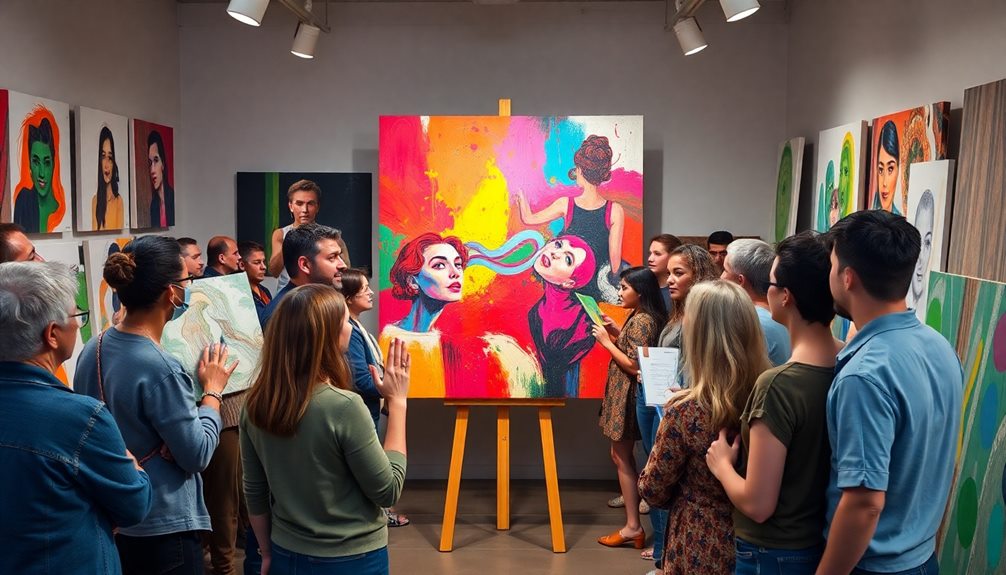
Audience perception of composition can significantly differ from one individual to another, shaped by personal experiences, cultural backgrounds, and individual preferences. When you look at a piece of art, your interpretation hinges on how the composition guides your attention. The arrangement of elements, such as balance and emphasis, can evoke varied emotional responses, leading to a unique engagement with the artwork.
For instance, if you're more familiar with classical compositions, modern abstract styles might feel less relatable or accessible. This familiarity influences how you navigate the piece and what elements capture your eye. The placement of focal points and the use of contrast can direct your gaze in distinct ways, creating different visual journeys that shape your understanding and appreciation of the artwork.
Moreover, factors like lighting and color choices can further elicit a range of emotional responses. What resonates with you mightn't resonate with someone else, highlighting the subjective nature of art appreciation.
Ultimately, each viewer's perception is a reflection of their own experiences, making the appreciation of composition in art a deeply personal journey.
Additional Resources
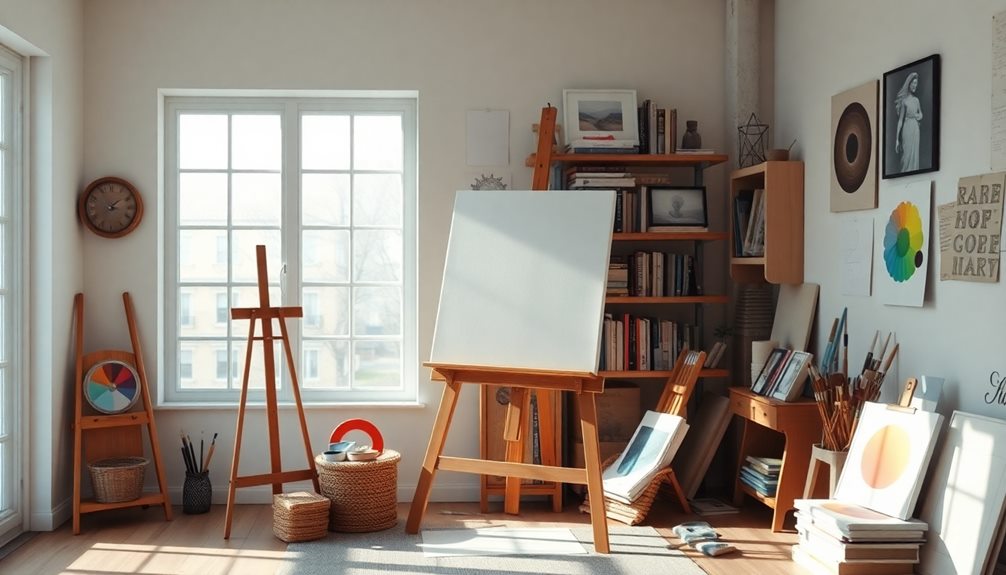
Understanding different perceptions of composition is just the beginning of enhancing your artistic skills. To deepen your understanding, explore online platforms like 21 Draw, which offer a variety of courses focused on composition for all skill levels. These courses can strengthen your foundational art skills and provide you with valuable insights.
Engaging with artist communities is another great resource. By seeking feedback and collaborating with fellow artists, you can discuss composition techniques and share your experiences, creating a supportive environment for growth.
Additionally, numerous websites dedicated to art education provide detailed articles and tutorials that offer practical tips and strategies for mastering composition.
Don't overlook the value of workshops and classes, where hands-on experiences allow you to apply the principles of composition immediately. These settings can reinforce your learning and boost your confidence.
Frequently Asked Questions
What Are the 7 Rules of Composition in Art?
You're exploring the seven rules of composition: Rule of Thirds, Rule of Odds, Rule of Space, Rule of Balance, Rule of Leading Lines, Rule of Contrast, and Rule of Framing. Each enhances visual storytelling.
How Do You Understand Composition?
To understand composition, you need to observe how different elements interact. Experiment with arranging lines, shapes, and colors. Trust your instincts, practice regularly, and let your creativity guide you towards creating balanced and engaging visuals.
What Are the Four Types of Composition in Art?
You've got four primary types of composition to explore: symmetrical, asymmetrical, radial, and bilateral. Each one creates unique visual experiences and emotional responses, making your artwork dynamic and engaging in different ways.
How to Learn About Composition in Art?
You can learn about composition by exploring foundational principles, studying notable artists, and practicing techniques like the Rule of Thirds. Engage in online courses and workshops to refine your skills and gain valuable feedback.
Conclusion
In understanding composition, you've explored essential techniques and concepts that shape how art communicates. By analyzing famous artworks, you've seen firsthand how these elements come together to engage viewers. Remember to apply these tips in your own creations and consider how different audiences might perceive your work. Keep experimenting and refining your skills, and don't hesitate to seek out additional resources to further enhance your artistic journey. Embrace the process, and let your creativity shine!

